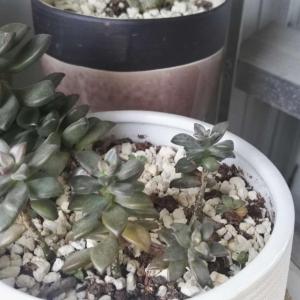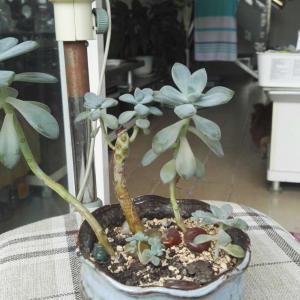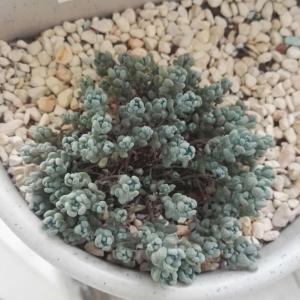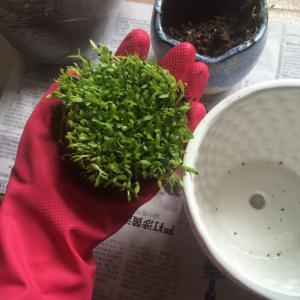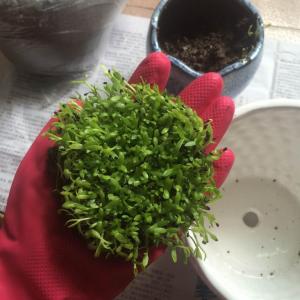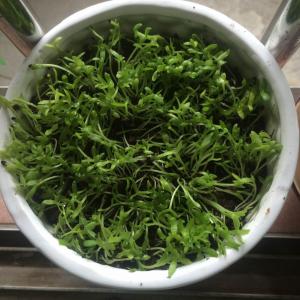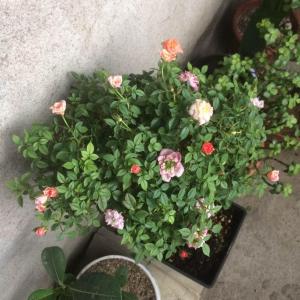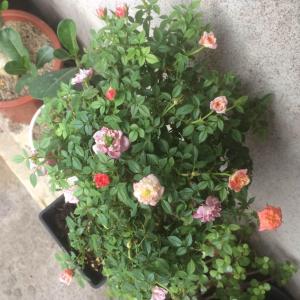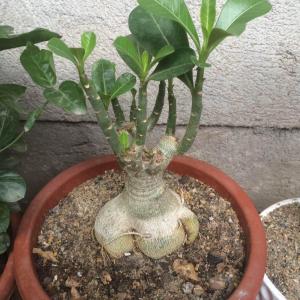文章
Colour_
2017年08月09日

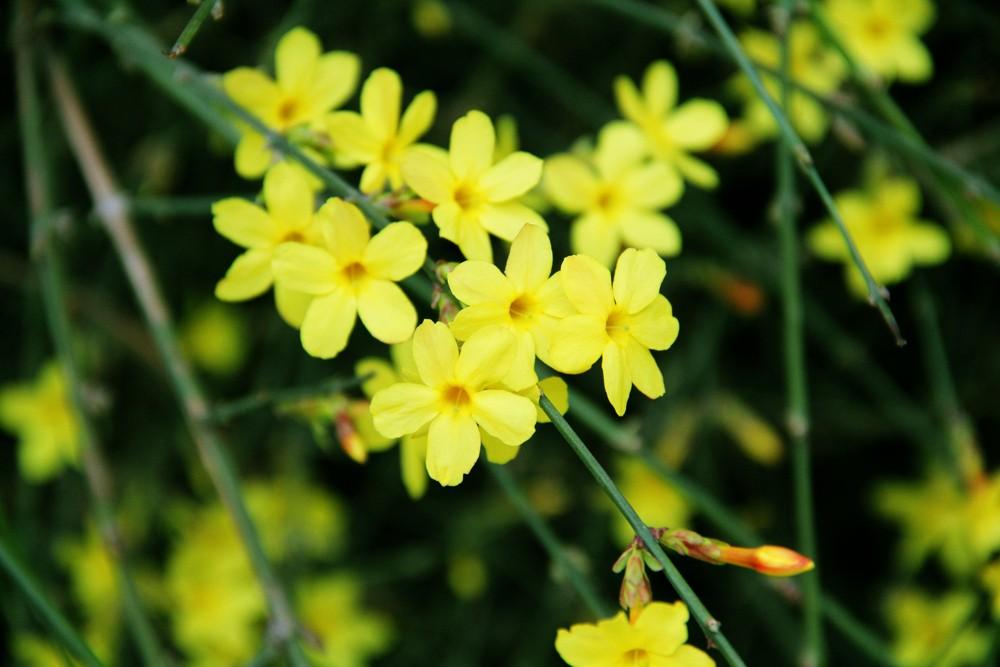
①在严寒到来之前将盆花移至朝南向阳的阳台上。
②7~8月间,每15~20天施1次稀薄豆饼液肥。8~10月改为10~15天施1次。
③早春应对植株的内堂枝、细枝或枯枝进行修剪,对徒长枝进行短截,加强通风透光。
0
0
文章
Colour_
2017年08月08日


#茉莉花 花期
茉莉花洁白浓香,自夏至秋开花不断,其中7月~8月为盛花期,花大而香,数量也多。据传若加强花期管理,一年可呈现三期盛花,有兴趣的朋友不妨一试。
茉莉花呈现三期盛花的养护技巧
1、早期摘花:6月上旬,茉莉陆续开出早花,但这批花一般小而少,要及时摘去,否则消耗养分过多,会影响其以后开花的质量与数量,并且延迟花期,影响观赏。摘花方法是连花带叶嫩枝一去摘去,促使新枝再发,枝叶茂盛。此时每周施2次淡肥水,并坚持盆土湿润。
2、一期盛花:6月下旬~7月上旬是第一期盛花,此时需加强肥水管理,薄肥勤施,每隔2天施肥1次,施以充分腐熟的有机液肥,肥水比例为1:4浇水要充足,一般每2天1次。通常浇水宜在早晨进行,而施肥则以傍晚为好。这样继续至7月下旬,由于肥水充分,可使花开大而多。
3、二期盛花:8月上旬,第二期花形成,此时施肥要比之前略浓,一般以肥水各半为宜。为促使茉莉更好开花,还可向叶面喷洒过磷酸钙溶液。8月下旬,逐步减少施肥,6天~7天施1次,浇水仍需较多,坚持2天1次。
4、三期盛花:9月上旬~10月上旬,第三期花形成,此时应停止施肥,浇水量也要逐渐减少,由于天气已渐转凉,会影响花蕾的形成,因而这批花的数量较少,至10月中旬以后开花结束,只需坚持盆土略湿即可。
5
19
小雨点456197:第一次养茉莉,稀里糊涂就养没了,这是第二次养,女儿帮下载了这个软件,真好!说的很详细,谢谢!目前养的还行😊
文章
Miss Chen
2017年08月08日

When you transplant a spiny cactus such as Easter lily cactus (Echinopsis oxygona), hardy to U.S. Department of Agriculture plant hardiness zones 8 through 11, safety is a consideration. For small cactuses, the best handling tool is a pair of kitchen tongs. Leather gloves give some protection, but spines easily penetrate cloth gloves. Because cactuses have succulent stems and roots, they need different transplanting methods from those used for leafy plants.

Digging Garden Cactus
Transplant garden cactuses during warm months rather than in winter. Wear leather gloves. First, mark the cactus' south side with a small paint spot. Dig around the plant about 6 inches out from the stem. With the shovel under the cactus, sever the bottom roots. Gently lever the cactus loose. For cylindrically shaped cactuses such as golden barrel (Echinocactus grusonii), hardy in USDA zones 8 through 11, put a loop of rope or hose around the stem for a handle. For columnar cactuses, use a strip of blanket or burlap for broader support so the stems don't break. Lift the cactus from the hole.
Moving and Transplanting Cactus
Remove the soil from the roots. Trim away damaged roots with pruning shears dipped in rubbing alcohol to sterilize them. The roots need to heal, so put the cactus on its side in the shade for a few days. Dig a hole in the plant's new location slightly larger than the existing roots. Place the cactus in the hole, putting the marked side to the south. Gently work fill dirt around the roots to replant it. Keep the soil level the same. Water the cactus thoroughly. For columnar cactuses such as Mexican fence post (Stenocereus marginatus), hardy in USDA zones 9b through 11, stake the plant if it is more than 5 feet tall until it has rooted back in.

Unpotting Cactuses
When the roots come through the drainage holes or the cactus stem fills the pot, transplant it. In northern areas, transplant in the spring. For the arid Southwest, transplant in spring, summer or early fall. The new pot should be about 2 inches larger than the old one. Handle the cactus with kitchen tongs. If the roots won't slide out of the pot, lay the potted cactus on its side on a hard surface and tap the pot. Rotate it a quarter turn and tap again, repeating until the cactus is loose. After unpotting the cactus, remove the old soil. Trim the roots with pruning shears dipped in rubbing alcohol.
Repotting Container Plants
Center the cactus in the new pot, keeping it at the same soil level. Add cactus potting mix, occasionally shaking the pot to settle the soil. Don't water it for a few days so the roots can heal. Then water the pot thoroughly until water comes out the drainage holes. These directions apply to cactuses in arid regions. Tropical soft-stemmed cactuses such as Christmas cactus (Schlumbergera truncata), hardy in USDA zones 10 through 12, bloom best when potbound. Repot them approximately every three years right after they flower in late winter, using a mixture of 1 part perlite, 1 part potting mix and 2 parts peat moss.

Digging Garden Cactus
Transplant garden cactuses during warm months rather than in winter. Wear leather gloves. First, mark the cactus' south side with a small paint spot. Dig around the plant about 6 inches out from the stem. With the shovel under the cactus, sever the bottom roots. Gently lever the cactus loose. For cylindrically shaped cactuses such as golden barrel (Echinocactus grusonii), hardy in USDA zones 8 through 11, put a loop of rope or hose around the stem for a handle. For columnar cactuses, use a strip of blanket or burlap for broader support so the stems don't break. Lift the cactus from the hole.
Moving and Transplanting Cactus
Remove the soil from the roots. Trim away damaged roots with pruning shears dipped in rubbing alcohol to sterilize them. The roots need to heal, so put the cactus on its side in the shade for a few days. Dig a hole in the plant's new location slightly larger than the existing roots. Place the cactus in the hole, putting the marked side to the south. Gently work fill dirt around the roots to replant it. Keep the soil level the same. Water the cactus thoroughly. For columnar cactuses such as Mexican fence post (Stenocereus marginatus), hardy in USDA zones 9b through 11, stake the plant if it is more than 5 feet tall until it has rooted back in.

Unpotting Cactuses
When the roots come through the drainage holes or the cactus stem fills the pot, transplant it. In northern areas, transplant in the spring. For the arid Southwest, transplant in spring, summer or early fall. The new pot should be about 2 inches larger than the old one. Handle the cactus with kitchen tongs. If the roots won't slide out of the pot, lay the potted cactus on its side on a hard surface and tap the pot. Rotate it a quarter turn and tap again, repeating until the cactus is loose. After unpotting the cactus, remove the old soil. Trim the roots with pruning shears dipped in rubbing alcohol.
Repotting Container Plants
Center the cactus in the new pot, keeping it at the same soil level. Add cactus potting mix, occasionally shaking the pot to settle the soil. Don't water it for a few days so the roots can heal. Then water the pot thoroughly until water comes out the drainage holes. These directions apply to cactuses in arid regions. Tropical soft-stemmed cactuses such as Christmas cactus (Schlumbergera truncata), hardy in USDA zones 10 through 12, bloom best when potbound. Repot them approximately every three years right after they flower in late winter, using a mixture of 1 part perlite, 1 part potting mix and 2 parts peat moss.
1
0
文章
Colour_
2017年08月08日

#报春花 为多年生宿根草本,常作一、二年生栽培,为我国原产名花。
报春花喜湿润、阳光充足的冷凉环境,生长适温在8℃~20℃;花芽分化要求在10℃~15℃气温条件下进行。一般用播种繁殖,种子4~5月成熟,6~9月播于装有培养土的浅盆中,覆盖薄土,浸透盆土,盖以玻璃,置阴暗处,保持盆土浸润,1周后出芽。去玻璃置半阴处生长,待真叶长至2~3对时,移植于小盆,待长至6厘米冠径时,再定植于直径12厘米瓦盆中。播种6个月后可开花,从立冬开到立夏,以1~3月开花最盛。喜肥沃的酸性腐殖土。
在生长期中‘盆土要湿润,并常施含磷多的稀薄液肥。夏秋间,将盆置于荫凉通风处,到10月下旬后,人室置向阳处,冬季保持室温在10℃~12℃,就能叶茂花繁。花谢后,剪去残花梗及于枯枝叶,可再抽花葶,继续开花。
种子采收。5~6月种子成熟,结实期间,保持室内通风、干燥,如湿度过大,易导致结实不良,甚至霉变。由于种子成熟期不一致,需随熟随采。采下的种子不可暴晒,以免丧失发芽力,应放在阴凉处吹干后收藏。
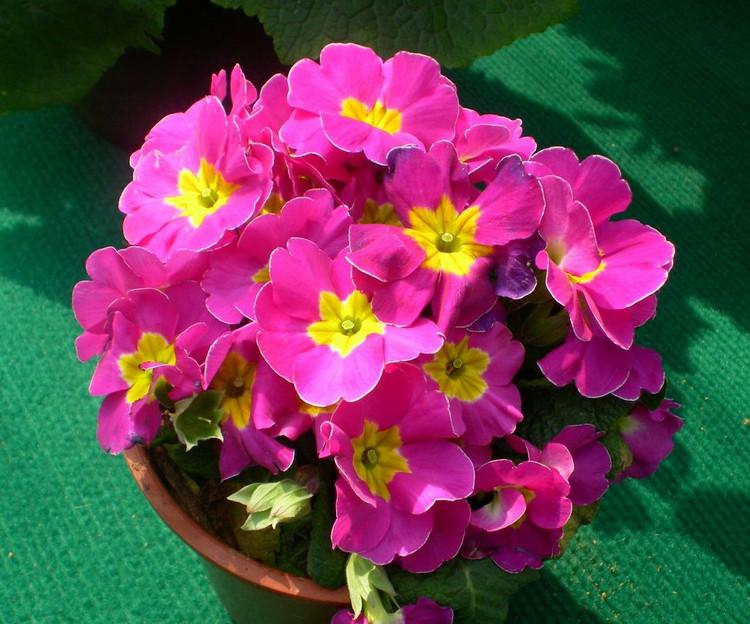
报春花喜湿润、阳光充足的冷凉环境,生长适温在8℃~20℃;花芽分化要求在10℃~15℃气温条件下进行。一般用播种繁殖,种子4~5月成熟,6~9月播于装有培养土的浅盆中,覆盖薄土,浸透盆土,盖以玻璃,置阴暗处,保持盆土浸润,1周后出芽。去玻璃置半阴处生长,待真叶长至2~3对时,移植于小盆,待长至6厘米冠径时,再定植于直径12厘米瓦盆中。播种6个月后可开花,从立冬开到立夏,以1~3月开花最盛。喜肥沃的酸性腐殖土。
在生长期中‘盆土要湿润,并常施含磷多的稀薄液肥。夏秋间,将盆置于荫凉通风处,到10月下旬后,人室置向阳处,冬季保持室温在10℃~12℃,就能叶茂花繁。花谢后,剪去残花梗及于枯枝叶,可再抽花葶,继续开花。
种子采收。5~6月种子成熟,结实期间,保持室内通风、干燥,如湿度过大,易导致结实不良,甚至霉变。由于种子成熟期不一致,需随熟随采。采下的种子不可暴晒,以免丧失发芽力,应放在阴凉处吹干后收藏。

0
2
文章
Colour_
2017年08月08日

#宫灯长寿花 的养殖方法:

土壤选择:宫灯长寿花虽不甚择土,但在重黏土中易烂根,而在疏松肥沃的微酸性沙质壤土中生长最佳。家庭盆栽宜用腐叶土与菜园表土等量混合后,再加5%至8%的沙作培养土。种植时加点骨粉或氮磷钾复合肥作基肥。
浇水要点:宫灯长寿花为肉质动物,体内含水分多,较耐旱而怕涝,在高层楼房空气干燥的条件下,生长良好。不可浇水过多,每2-3天浇1次水,盆土以潮湿偏干为好。假如盆土过温,易惹起根腐朽。浇水把握“见干见湿、浇则浇透”冬季应增加浇水,中止施肥。春秋两季3天左右见盆土干后浇一次透水,常保持稍润即可。夏季宜少浇水,5天至7天浇一次为好,置于室外的长寿花,雨季要避雨淋,水多易烂根落叶甚至死亡。
光照要求:宫灯长寿花对光照请求不严,全日照、半日照和散射光照条件下均能生长优良。宫灯长寿花喜阳光充足的环境,除盛夏中午宜稍荫蔽外,其余时间都要放在向阳处,每天至少要能见4小时以上的直射光才能健壮生长。楼房阳台每半月要将花盆转动180度,使之受光均匀,避免偏冠,降低观赏价值。半阴处虽也能生长,但茎细叶薄花少色淡,远不如向阳处繁茂。如过阴不仅易掉叶无花,就是已开花的植株置于阴处,也会花色变暗淡,继而花脱落枯萎。
温度要求:宫灯长寿花最适宜生长的温度是15℃至25℃,高于30℃生长迟缓,进入半休眠状态,也就是说夏季长寿基本是不长的,低于10℃生长停滞,低于8℃叶色发红,花期推迟,0℃以下则易冻死。
冬季酷热时要留意透风、遮荫,防止强阳光直射。冬季入温室或放室外向阳处,温度坚持10℃以上,最低温度不能低于5℃,温度低时叶片轻易发红。因此要养好长寿花,须为其创造一个冬暖夏凉的小环境,盛夏的中午要避强光暴晒,置于散射光充足的半阴处,如大树下、屋檐下或北向阳台,特别要注意通风降温,可向附近地面洒水,但不能洒在植株上。立秋后,从8月下旬到9月上旬,可逐步见阳光,10月起则应多见阳光,促其从营养生长向生殖生长转化。当最低气温降至10℃左右时,移入室内置于南向或西向窗台前,使之多见阳光,保持夜间10℃,白天15℃至18℃,12月便可开花。
施肥要点:宫灯长寿花喜肥,幼苗上盆定植半月或老株分株半月后可施2次至3次以氮为主的液肥,促长茎叶,花后可施一次以氮为主的液肥,促其复壮。其余时间除夏季停施外,只能施氮磷钾复合肥,施肥时勿将肥弄在叶子上,否则叶片易腐烂,如不小心弄脏叶面,应用水冲洗掉。长寿花的花期长,要打破花期不施肥的戒律,每月施一次稀薄的氮磷钾肥或0.2%的磷酸二氢钾溶液,使后期花不致因缺肥而变小色淡。
病虫害防治:主要有白粉病和叶枯病危害,可用65%代森锌可湿性粉剂600倍液喷洒。虫害有介壳虫和蚜虫危害叶片和嫩梢,可用40%乐果乳油1000倍液喷杀防治。无论地栽或盆栽,块茎种植前均需进行土壤消毒,以防土壤传染病害。


土壤选择:宫灯长寿花虽不甚择土,但在重黏土中易烂根,而在疏松肥沃的微酸性沙质壤土中生长最佳。家庭盆栽宜用腐叶土与菜园表土等量混合后,再加5%至8%的沙作培养土。种植时加点骨粉或氮磷钾复合肥作基肥。
浇水要点:宫灯长寿花为肉质动物,体内含水分多,较耐旱而怕涝,在高层楼房空气干燥的条件下,生长良好。不可浇水过多,每2-3天浇1次水,盆土以潮湿偏干为好。假如盆土过温,易惹起根腐朽。浇水把握“见干见湿、浇则浇透”冬季应增加浇水,中止施肥。春秋两季3天左右见盆土干后浇一次透水,常保持稍润即可。夏季宜少浇水,5天至7天浇一次为好,置于室外的长寿花,雨季要避雨淋,水多易烂根落叶甚至死亡。
光照要求:宫灯长寿花对光照请求不严,全日照、半日照和散射光照条件下均能生长优良。宫灯长寿花喜阳光充足的环境,除盛夏中午宜稍荫蔽外,其余时间都要放在向阳处,每天至少要能见4小时以上的直射光才能健壮生长。楼房阳台每半月要将花盆转动180度,使之受光均匀,避免偏冠,降低观赏价值。半阴处虽也能生长,但茎细叶薄花少色淡,远不如向阳处繁茂。如过阴不仅易掉叶无花,就是已开花的植株置于阴处,也会花色变暗淡,继而花脱落枯萎。
温度要求:宫灯长寿花最适宜生长的温度是15℃至25℃,高于30℃生长迟缓,进入半休眠状态,也就是说夏季长寿基本是不长的,低于10℃生长停滞,低于8℃叶色发红,花期推迟,0℃以下则易冻死。
冬季酷热时要留意透风、遮荫,防止强阳光直射。冬季入温室或放室外向阳处,温度坚持10℃以上,最低温度不能低于5℃,温度低时叶片轻易发红。因此要养好长寿花,须为其创造一个冬暖夏凉的小环境,盛夏的中午要避强光暴晒,置于散射光充足的半阴处,如大树下、屋檐下或北向阳台,特别要注意通风降温,可向附近地面洒水,但不能洒在植株上。立秋后,从8月下旬到9月上旬,可逐步见阳光,10月起则应多见阳光,促其从营养生长向生殖生长转化。当最低气温降至10℃左右时,移入室内置于南向或西向窗台前,使之多见阳光,保持夜间10℃,白天15℃至18℃,12月便可开花。
施肥要点:宫灯长寿花喜肥,幼苗上盆定植半月或老株分株半月后可施2次至3次以氮为主的液肥,促长茎叶,花后可施一次以氮为主的液肥,促其复壮。其余时间除夏季停施外,只能施氮磷钾复合肥,施肥时勿将肥弄在叶子上,否则叶片易腐烂,如不小心弄脏叶面,应用水冲洗掉。长寿花的花期长,要打破花期不施肥的戒律,每月施一次稀薄的氮磷钾肥或0.2%的磷酸二氢钾溶液,使后期花不致因缺肥而变小色淡。
病虫害防治:主要有白粉病和叶枯病危害,可用65%代森锌可湿性粉剂600倍液喷洒。虫害有介壳虫和蚜虫危害叶片和嫩梢,可用40%乐果乳油1000倍液喷杀防治。无论地栽或盆栽,块茎种植前均需进行土壤消毒,以防土壤传染病害。

1
3
文章
Dummer. ゛☀
2017年08月07日

Description
This slender but tall orchid grows up to 60cm tall. There are 3-8 narrow, pointed leaves arranged along the stem which is flushed deep purple. The inflorescence is lax and carries between 9-22 large dark pink flowers. The erect lateral sepals are bent backwards and are often so close that they touch each other. A hood is formed by the dorsal sepal and the two upper petals. The flower lip is sharply folded length-wise and has a pale (almost white) centre which is usually unmarked or occasionally lightly marked with pink.
Distribution
The range of this species extends from the Algarve region of Portugal (where it is very rare) as far north as Sweden and east to the westerly parts of Asia. It is not recorded in mainland Britain but is found in the Channel Islands where it is referred to as the Jersey Orchid.
Habitat
This orchid prefers damp alkaline habitats and can be found in fens, marshy meadows and beside streams.
Flowering times
In the far south this orchid flowers in April and May, but further north it can be found in full bloom to the end of June
This slender but tall orchid grows up to 60cm tall. There are 3-8 narrow, pointed leaves arranged along the stem which is flushed deep purple. The inflorescence is lax and carries between 9-22 large dark pink flowers. The erect lateral sepals are bent backwards and are often so close that they touch each other. A hood is formed by the dorsal sepal and the two upper petals. The flower lip is sharply folded length-wise and has a pale (almost white) centre which is usually unmarked or occasionally lightly marked with pink.

Distribution
The range of this species extends from the Algarve region of Portugal (where it is very rare) as far north as Sweden and east to the westerly parts of Asia. It is not recorded in mainland Britain but is found in the Channel Islands where it is referred to as the Jersey Orchid.

Habitat
This orchid prefers damp alkaline habitats and can be found in fens, marshy meadows and beside streams.

Flowering times
In the far south this orchid flowers in April and May, but further north it can be found in full bloom to the end of June
0
0



